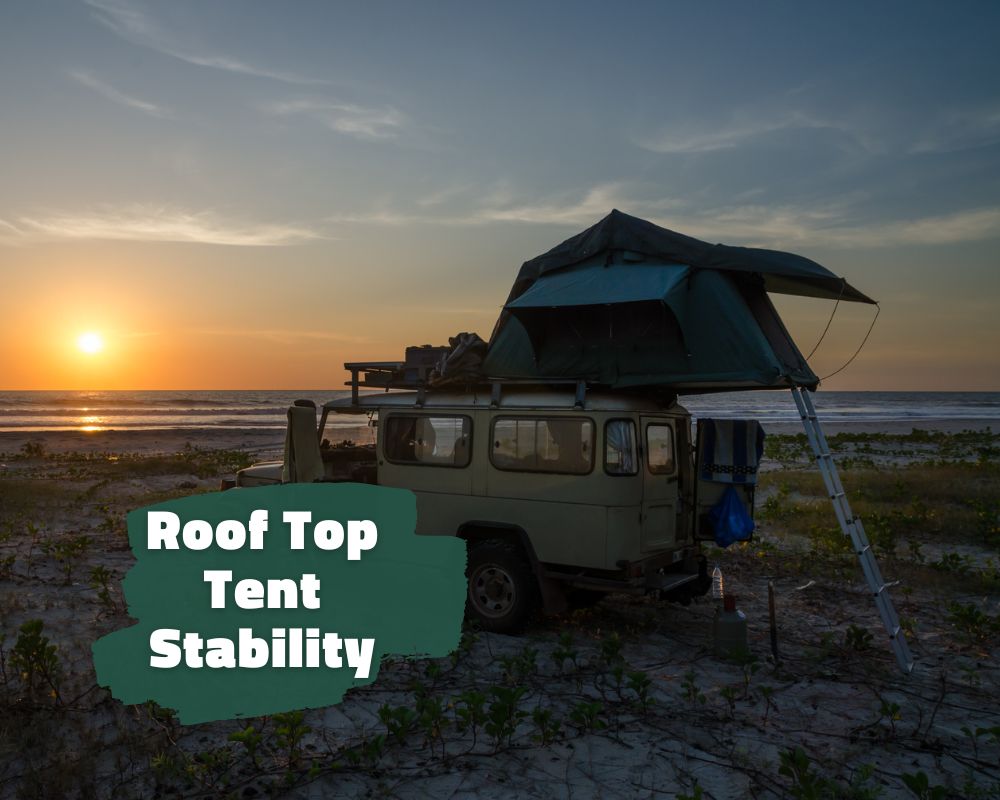Camping in high winds can be a daunting experience, especially if you’re not prepared for it. In this article, we will discuss the dangers of high winds, how to secure a tent in high winds, how to reinforce a tent, and how to stop a rooftop tent from flapping in the wind.
By following these expert tips, you can keep your tent stable and secure during challenging weather conditions.
What Wind Is Dangerous for Tents?
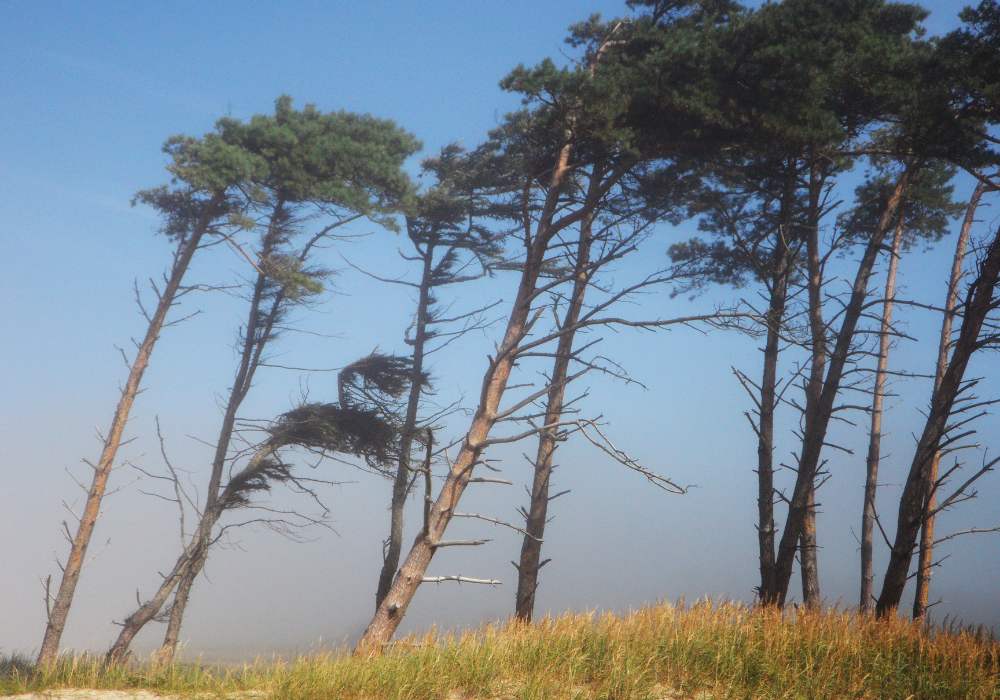
Wind strength is typically measured in miles per hour (mph) or kilometers per hour (km/h), and different categories of wind speed determine the level of danger they pose to tents.
Strong or severe winds are hazardous to tents. Specifically, tents are at high risk from straight-line winds, also referred to as downbursts, which are produced by thunderstorms and known for their abruptness and high velocity. These winds can exceed 100 mph (160 km/h) and result in considerable damage to tents, such as ripping or lifting them.
Tents are also vulnerable to tornadoes and hurricanes, which are known for their high wind speeds and ability to cause significant damage to structures, including tents. Tornadoes can generate winds of up to 300 mph (480 km/h), while hurricanes can produce winds of up to 200 mph (320 km/h) or more.
Although stronger winds are the most dangerous, even moderate winds can pose a threat to tents if they are not properly secured or if the tent isn’t designed to withstand them. Therefore, you should choose a tent that is appropriate for the weather conditions, and you should secure it properly using guy lines and stakes.
How Do You Secure a Tent in High Wind?
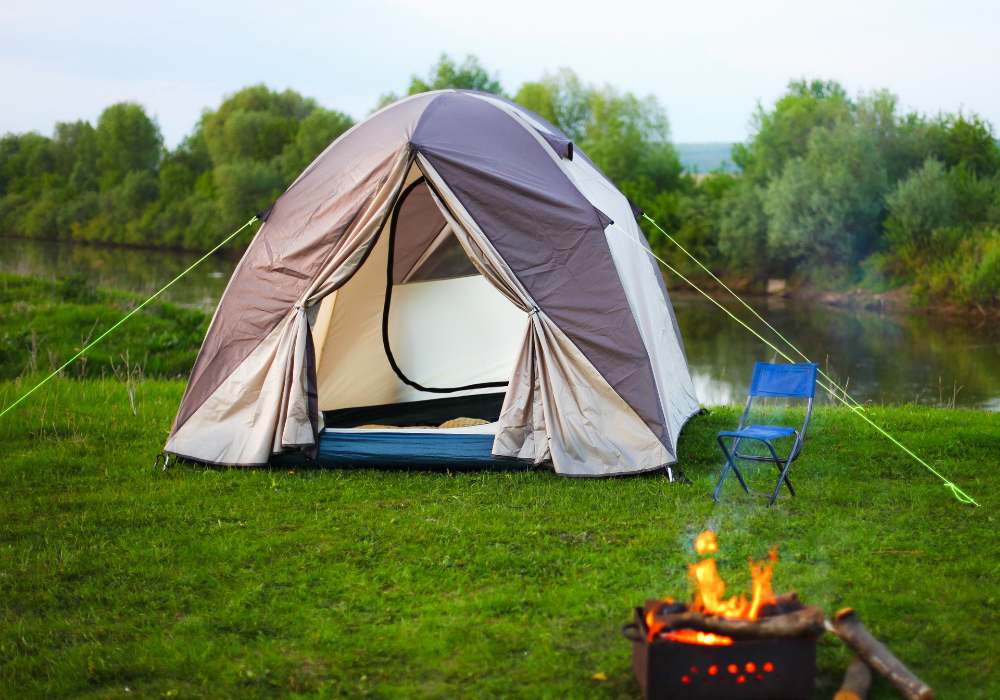
To ensure that your tent stays secure during high winds, it’s essential to take proper precautions. First, select a sheltered campsite that is protected from the wind. Then, use sturdy tent stakes that are at least 6-8 inches long and drive them into the ground at a 45-degree angle. Ensure that they are at an equal distance from the tent to create even tension.
You can also use guy lines to provide additional support and stability, either by staking them into the ground at a 45-degree angle or by securing them to nearby trees or rocks. Also, the rainfly should be securely fastened over the tent and staked down or attached to nearby trees or rocks to act as a windbreak.
Additionally, try to position the tent so that the smallest side faces the direction of the wind to reduce its surface area. Also, when you’re inside the tent, avoid touching the walls during high winds; this will help prevent the tent from collapsing.
Although these steps will reduce the risk of damage or collapse during high winds, remember to move to a safer location if the winds become too strong.
How to Reinforce a Tent
There may be times when you’re camping in challenging weather conditions and need to reinforce your tent to make it sturdier. This can be achieved by using guy lines, extra stakes, sandbags or rocks, a footprint or groundsheet, reinforcing the poles, using a tarp, and avoiding exposed areas.
- Using guy lines and extra stakes will stabilize the tent and prevent it from flapping or collapsing in high winds.
- Sandbags or rocks can weigh down the corners of the tent and prevent it from lifting.
- A footprint, moving blanket, or groundsheet can protect the tent floor from damage.
- Reinforcing the poles with duct tape or cord can add extra stability.
- You can also use a tarp as a windbreak to protect the tent from wind and rain.
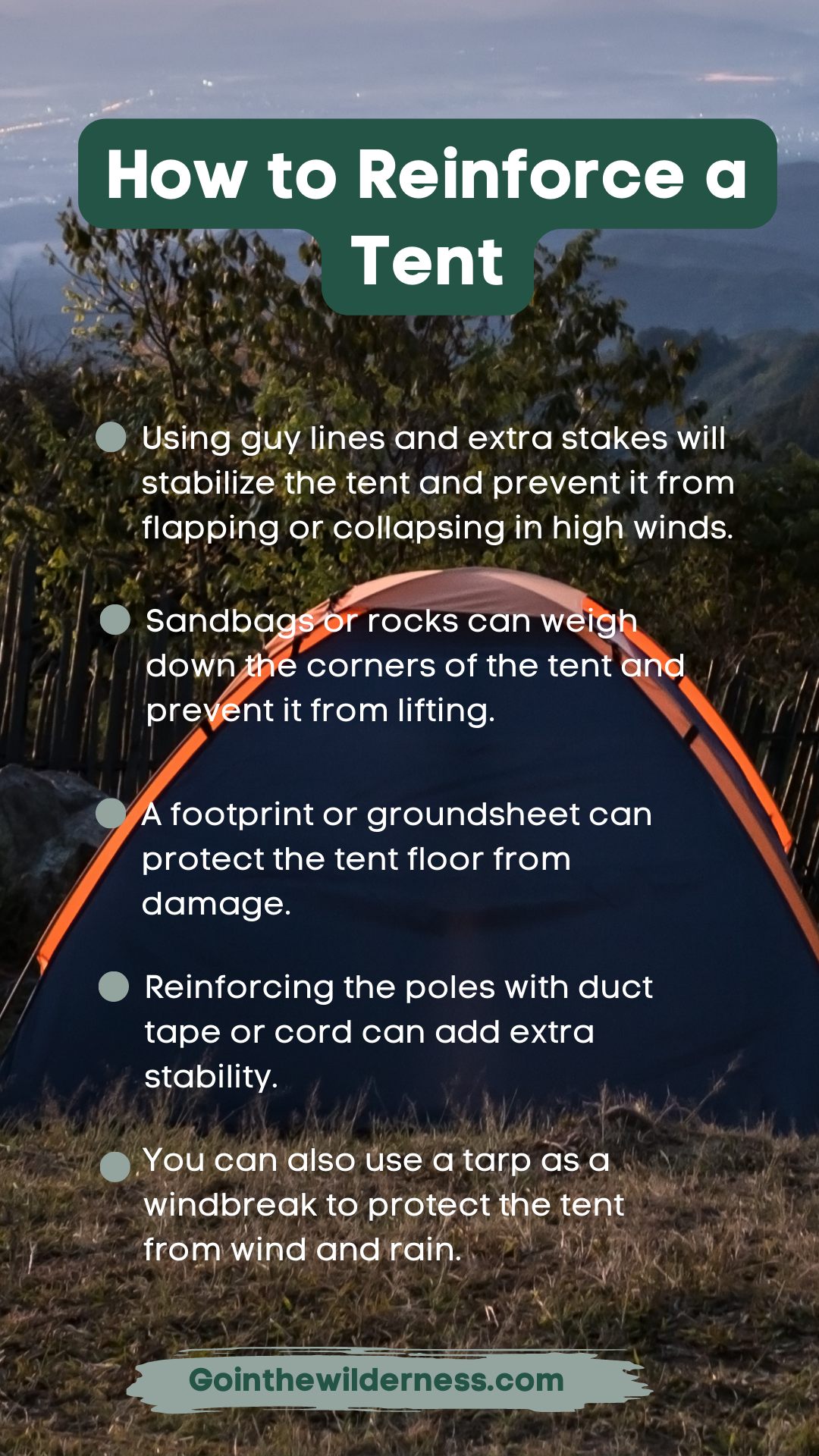
How to Stop a Rooftop Tent from Flapping in Wind
When you’re camping in high winds, a flapping tent rooftop can not only be distracting, but also might damage your tent’s fabric. To avoid this, there are a few tips to follow.
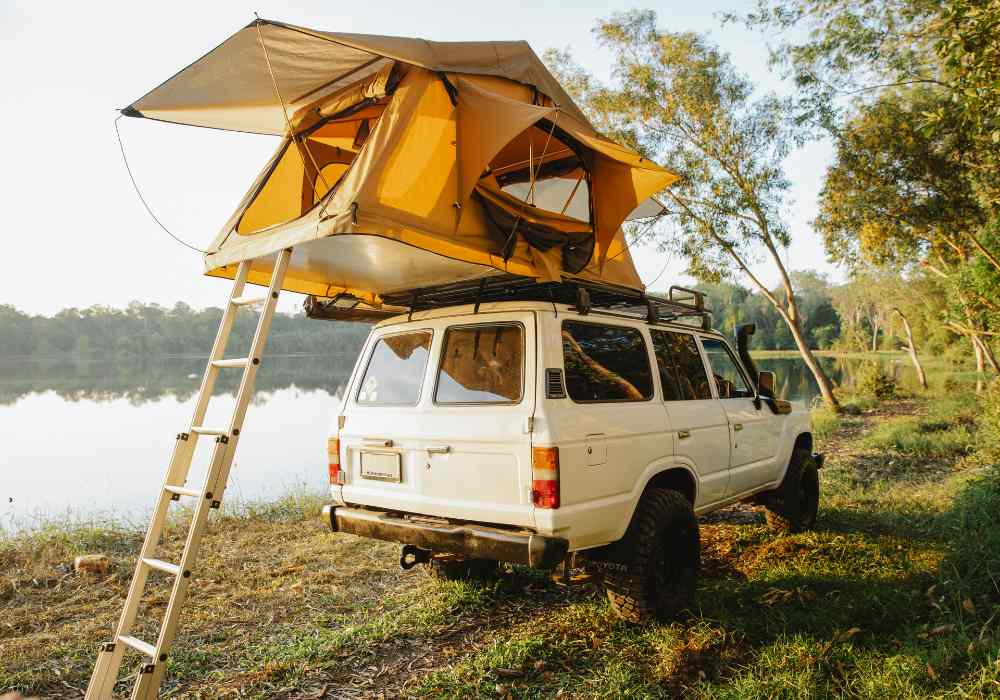
- Firstly, set up your tent in a sheltered location, use windbreaks, and adjust the tent’s ventilation to reduce the wind’s impact.
- Furthermore, you should ensure that the guy lines are taut enough, and consider using additional ones to reinforce your tent’s stability.
- Other techniques include using sandbags or rocks to anchor the tent, tightening the rainfly, or using a bungee cord or rope to create tension between the rooftop and the tent poles.
By implementing these tips, you can prevent your tent’s rooftop from flapping, thereby keeping your tent stable and secure during high winds.
Conclusion
Camping in high winds can be challenging, but you can effectively secure your tent in various ways. Select a sheltered campsite, use sturdy tent stakes and taut guy lines, and properly secure the rainfly to protect your tent. You can also use a windbreak or tarp, and you can reinforce your tent with sandbags, rocks, or extra stakes.
All in all, if you follow these expert tips, you should stay safe and comfortable in your tent during windy weather. Time to test it out!
I am Bruno. Navigating the urban rush by day, I find peace under the stars by night. Alongside my loyal companion and co-adventurer Lilith, we explore the balance between city life and nature’s embrace. Through writing and films, I delve into bushcraft and the wild’s allure.
GointheWilderness is my bridge between these two realms, guiding you to reconnect with your innate wilderness.
Eden is here and now; join us in rediscovering it.

